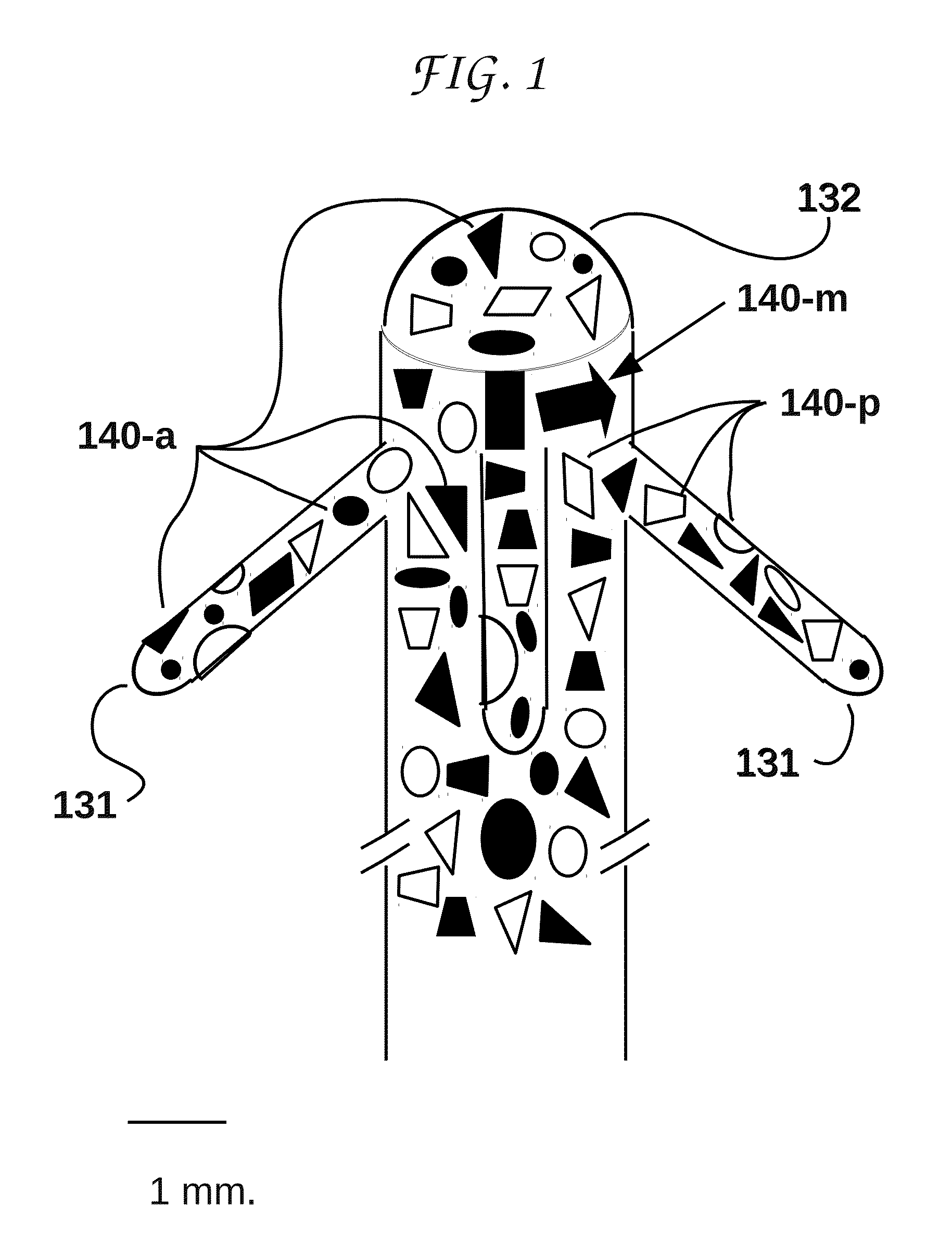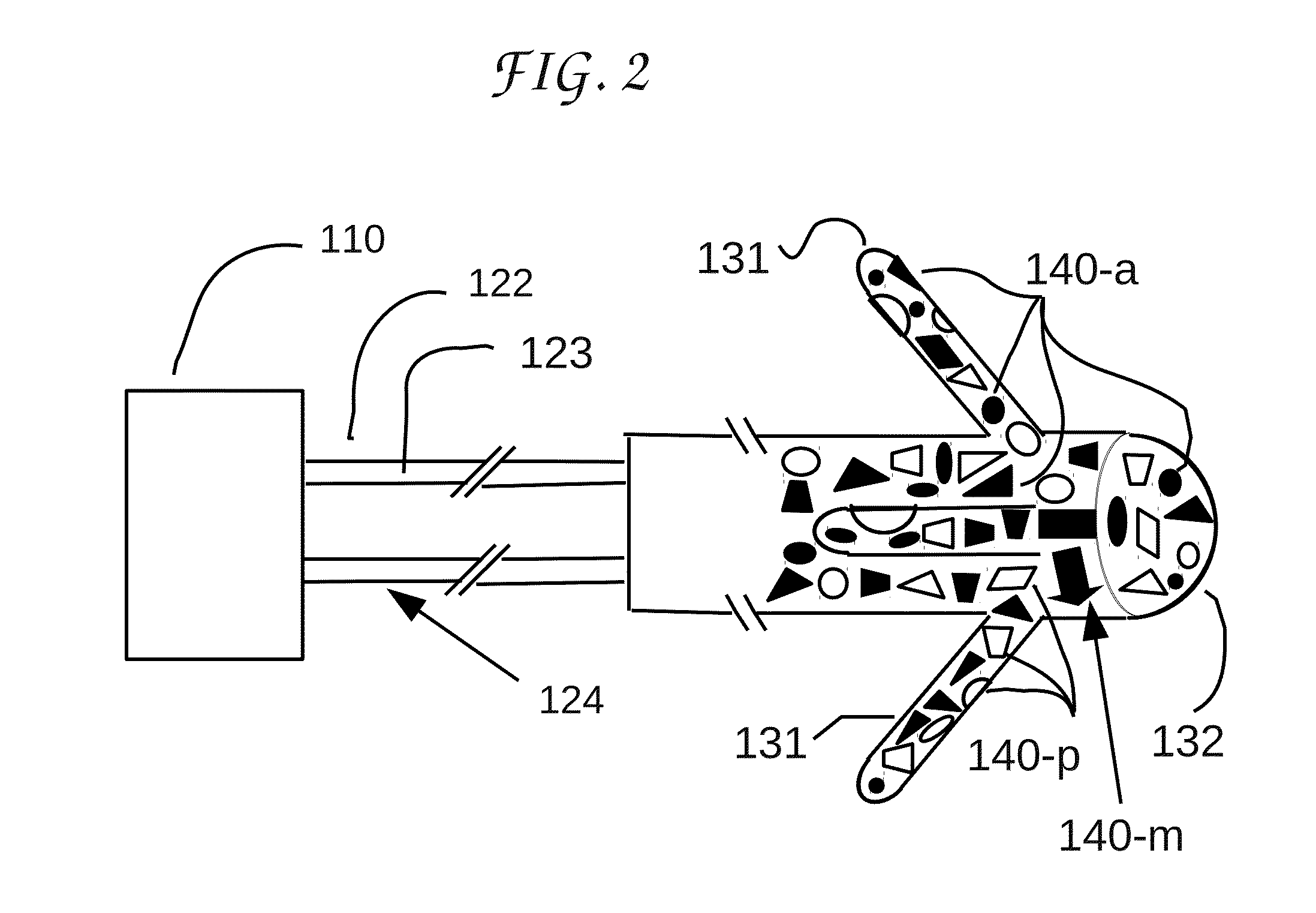Animal and plant cell electric stimulator with randomized spatial distribution of electrodes for both current injection and for electric field shaping
a technology of electric stimulation and electrodes, applied in the field of electric stimulation of heart cells, can solve the problems of difficult problem solving, incorrect time delay of electric pulse, and high cost of pumping efficiency, and achieve the effects of optimizing squeezing sequence, efficient pumping, and high pumping fraction
- Summary
- Abstract
- Description
- Claims
- Application Information
AI Technical Summary
Problems solved by technology
Method used
Image
Examples
Embodiment Construction
Overview
[0058]FIG. 1 shows the main embodiment of our invention, which is for heart pacemaking applications. FIG. 1 is a heart-type electrical stimulator (heart pacemaker or piquita) with multiple shaped electrodes randomly arranged on its surface. Note that similar pattern on different supporting structures are possible, the supporting structure design being determined by its function, as for heart pacemaker (this case), Deep Brain Stimulator (DBS), cortex stimulation, spinal stimulation, stomach stimulation, etc. 140-a points to type1 or active electrodes and 140-p points to type2 or passive electrodes. FIG. 1 shows one of the current art anchoring distal extremities 132 of a current art heart pacemaker with the improvements of our invention. Note that different ending anchoring attachments 131 are in use, and that the model shown in FIG. 1 uses one of the several used attachment endings, but the same principles apply to other anchoring attachments. The main body 132 of the piquit...
PUM
 Login to View More
Login to View More Abstract
Description
Claims
Application Information
 Login to View More
Login to View More - R&D
- Intellectual Property
- Life Sciences
- Materials
- Tech Scout
- Unparalleled Data Quality
- Higher Quality Content
- 60% Fewer Hallucinations
Browse by: Latest US Patents, China's latest patents, Technical Efficacy Thesaurus, Application Domain, Technology Topic, Popular Technical Reports.
© 2025 PatSnap. All rights reserved.Legal|Privacy policy|Modern Slavery Act Transparency Statement|Sitemap|About US| Contact US: help@patsnap.com



